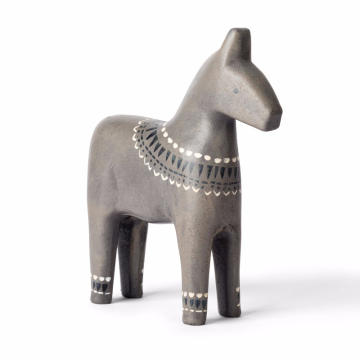Historical Influences on Spanish Cuisine
The evolution of Spanish cuisine is a reflection of the diverse historical influences that have shaped the Iberian Peninsula over centuries. This gastronomic journey begins with the ancient civilizations that inhabited the region, such as the Celts, Romans, and Moors. Each culture brought distinct ingredients, cooking methods, and culinary philosophies that significantly shaped what is now recognized as Spanish cuisine.
The Celts, known for their agrarian lifestyle, introduced a variety of grains such as barley and wheat, as well as cooking techniques that involved slow-roasting over an open flame. The Romans expanded the culinary landscape of Spain with their sophisticated palate and advanced agricultural practices. They introduced staples, including olives and grapes, as well as the famous Roman method of marinating food, which remains prevalent in Spanish cooking today.
However, perhaps the most profound impact came from the Moors, who ruled the Iberian Peninsula for nearly 800 years. Their influence introduced a wealth of spices, herbs, and fruits that transformed Spanish dishes. For example, saffron and cinnamon became integral to many traditional recipes. Furthermore, the Moors' agricultural innovations, such as irrigation techniques, facilitated the growth of a variety of crops, including citrus fruits and nuts, which remain key components of numerous Spanish dishes.
The Age of Exploration marked another pivotal moment in the evolution of Spanish cuisine. The opening of trade routes enabled the introduction of New World ingredients, such as tomatoes, potatoes, and peppers. These ingredients were quickly incorporated into local cooking and altered the landscape of Spanish food forever. The integration of these new elements not only diversified the cuisine but also solidified Spain's role in the global culinary narrative.
Overall, the historical influences on Spanish cuisine showcase a rich tapestry woven from the contributions of various civilizations, each leaving an enduring mark. This engaging interplay of flavors and techniques continues to define the essence of Spanish gastronomy, making it a unique and celebrated aspect of the nation's cultural heritage.
Regional Delicacies and Unique Ingredients
Spain’s diversity is mirrored in its regional cuisines, each showcasing a unique blend of flavors and ingredients that reflect the local culture and geography. From the rugged coastline of Galicia, where fresh seafood dominates, to the arid landscapes of Andalusia, each region offers distinct culinary experiences. In Galicia, one can savor pulpo a la gallega, a dish featuring tender octopus seasoned with paprika, olive oil, and sea salt, emphasizing the region's access to the Atlantic Ocean's bounty.
Moving to Valencia, the world-famous paella originates from this region. Traditionally made with rice, saffron, and a variety of local ingredients such as rabbit, chicken, and green beans, paella exemplifies the harmonious blend of flavors. The use of saffron, with its vibrant color and unique flavor, is critical in combining the dish’s various components. This spice, predominantly cultivated in the region of Castilla-La Mancha, is a pillar of Spanish cuisine, appreciated for its distinct taste and ability to elevate simple dishes.
In the southern region of Andalusia, tapas culture thrives, offering an array of small dishes perfect for sharing. From olives marinated with herbs to chorizo al vino, the diversity of tapas reflects local ingredients and traditional cooking methods. Similarly, the Basque Country presents pintxos, which are small bites typically served on bread and topped with local specialties like anchovies, peppers, and homemade relishes. The emphasis on locally sourced ingredients is prominent across all regions, where practices such as olive oil production, herb cultivation, and seasonal harvests play a pivotal role in defining their culinary characteristics. This rich tapestry of flavors and techniques showcases not only the regional diversity but also the unifying thread of nature's bounty that nourishes the heart of Spanish cuisine.
Traditional Cooking Techniques and Culinary Practices
Spanish cuisine is renowned for its rich flavors, vibrant colors, and regional diversity, all of which are deeply rooted in traditional cooking techniques. Passed down through generations, the methods employed in Spanish kitchens reflect the cultural heritage and community aspects of food preparation. Slow-cooking is one of the hallmark techniques, where stews like cocido and fabada are prepared meticulously over several hours, allowing flavors to meld and develop fully. This approach not only enhances taste but also creates a communal experience, as families gather around the stove, sharing stories and contributing to the meal's preparation.
Grilling is another essential technique in Spanish cooking. Techniques such as 'asador' (grilling on an open flame) are prevalent in regions like the Basque Country, where fresh produce and seafood are grilled to perfection. The simplicity of using high-quality ingredients and minimal seasoning allows the natural flavors to shine through. Additionally, the art of preserving foods, such as making chorizo or pickling vegetables, showcases a historical connection to survival and resourcefulness. These preservation methods not only extend the shelf life of ingredients but also enhance their flavor, making preserved items staples in many dishes.
The social aspect of dining in Spain cannot be overlooked. Meals in Spanish culture often serve as a way to bring people together, transcending mere nourishment. The tradition of tapas—small dishes meant for sharing—fosters interaction among diners, turning meals into social events steeped in conversation and shared experiences. In the face of globalization, many modern chefs in Spain are reviving these traditional techniques and culinary practices, infusing them with contemporary twists while respecting their origins. This blend of the old and the new ensures that the richness of Spanish cuisine remains vibrant, safeguarding culinary traditions for future generations.
The Global Influence of Spanish Cuisine Today
Spanish cuisine has evolved significantly, yet it retains its rich heritage while adapting to global culinary trends. The growing interest in Spanish gastronomy is evident through the increasing number of Spanish restaurants that have emerged across continents, from North America to Asia. These establishments often feature a diverse range of traditional and contemporary dishes, showcasing the unique flavors that Spanish food has to offer. Diners are drawn not only to the taste but also to the social experience inherent in Spanish dining culture.
Central to the appeal of Spanish cuisine is its celebrated tapas culture. Tapas, small dishes served for sharing, have gained immense popularity beyond Spain’s borders, allowing people to enjoy a variety of flavors in a single meal. This communal style of dining promotes interaction and a shared culinary experience, contributing to the rise of Spanish-themed social gatherings and events. Many restaurants now offer tapas-inspired menus, encouraging patrons to explore the diverse ingredients characteristic of Spanish cooking.
Moreover, Spanish chefs have become influential figures on the global culinary scene, often combining traditional recipes with innovative techniques. This fusion of old and new is evident in the work of acclaimed chefs like Ferran Adrià and José Andrés, who have inspired many to rethink conventional Spanish cooking. Culinary festivals and gastronomic events, such as La Tomatina and the Calçotada, further enhance the visibility of Spanish cuisine, attracting food enthusiasts eager to experience authentic flavors and traditions.
In conjunction with the culinary offerings, the appreciation for Spanish wines, particularly those from regions like La Rioja and Ribera del Duero, continues to grow internationally. Wine bars and restaurants are increasingly incorporating Spanish wines into their selections, recognizing the depth and complexity they bring to modern dining. As Spanish cuisine continues to transcend borders, it remains a vibrant, ever-evolving culinary art that captivates chefs and diners alike.








